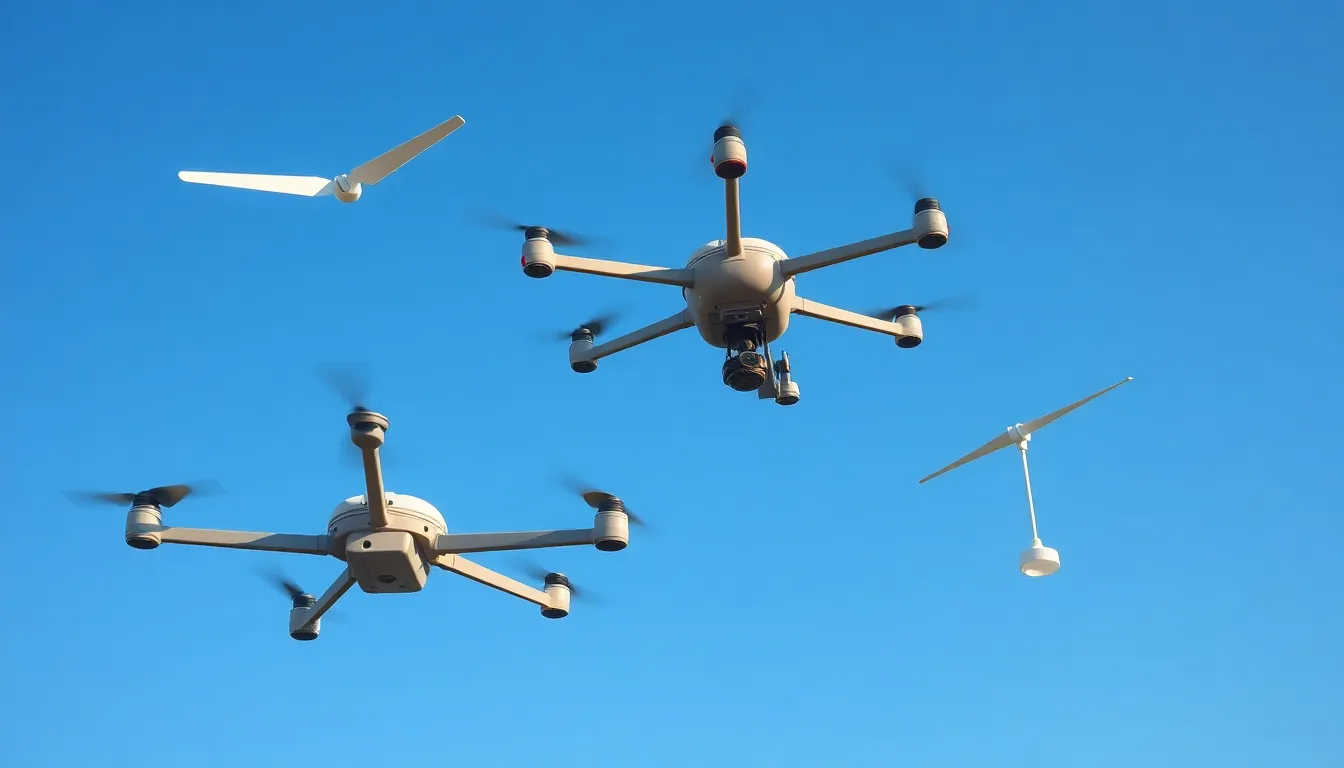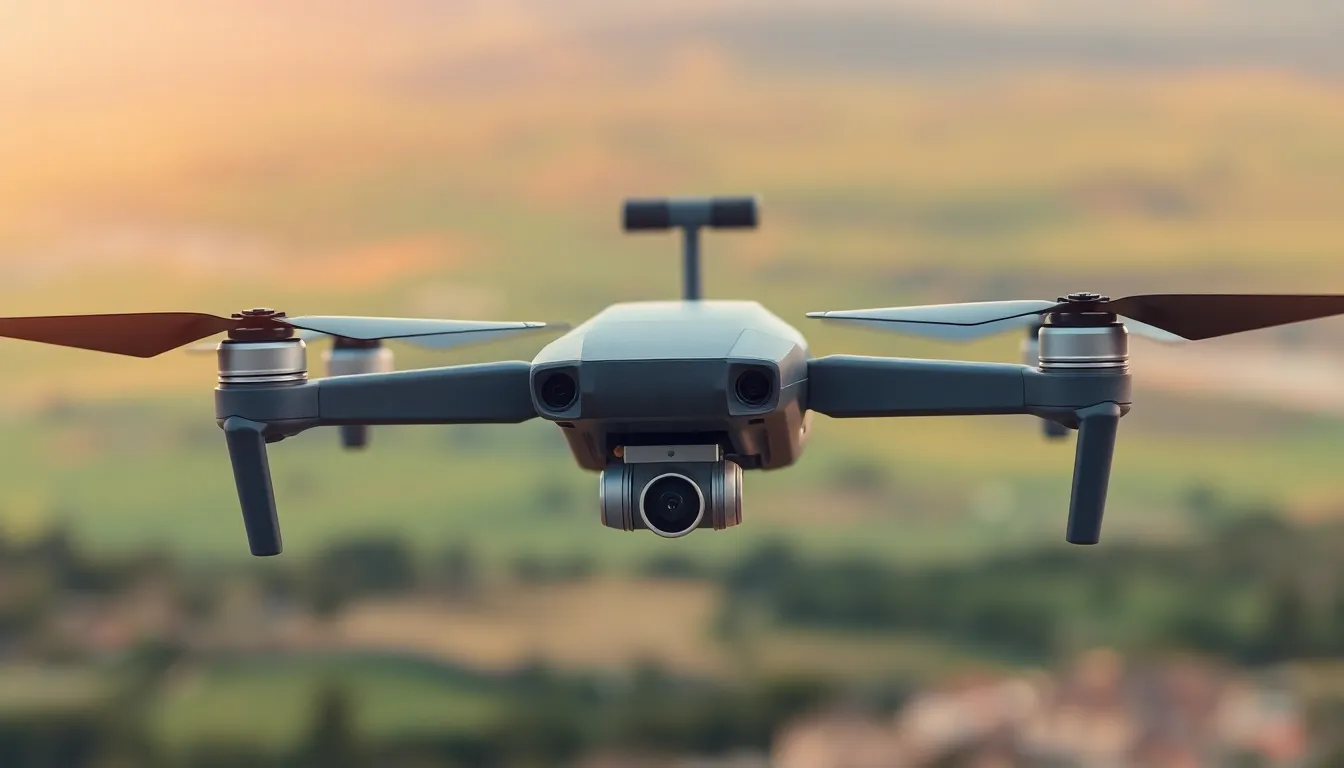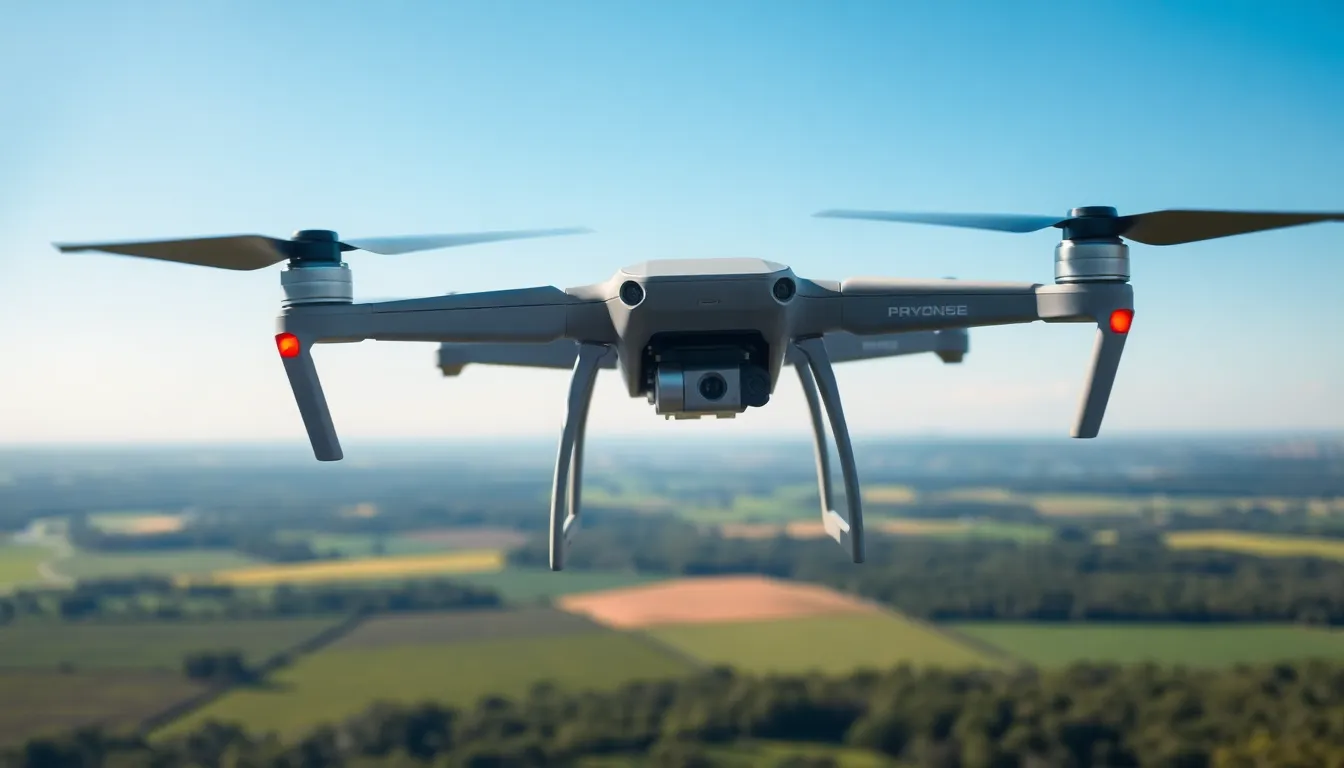In a world where drones are taking to the skies like seagulls at a picnic, understanding drone antennas is crucial. These unsung heroes of aerial technology ensure that your drone doesn’t just flail around like a lost puppy but communicates effectively and stays connected. Without the right antenna, your high-tech flying gadget might as well be trying to send a text message via carrier pigeon.
Table of Contents
ToggleOverview of Drone Antennas
Drone antennas play a crucial role in maintaining a stable connection between the drone and the operator. Effective communication depends on antenna design and quality. Various types of antennas serve distinct functions, ensuring optimal performance for different drone applications.
Directional antennas focus signals in specific directions. These antennas enhance range and reduce interference, making them ideal for surveying and mapping missions. Omni-directional antennas provide a broader coverage area. They allow for more flexibility in movement, perfect for tasks requiring 360-degree signal accessibility.
Materials impact antenna performance significantly. Lightweight materials ensure drones maintain their agility and endurance during flights. Durable materials withstand environmental factors, such as wind and rain, ensuring longevity.
Signal frequency also affects communication quality. Lower frequencies offer improved penetration through obstacles, while higher frequencies deliver faster data rates. The choice between frequencies depends on the specific requirements of the drone operation.
In addition to types and materials, antenna placement matters greatly. Strategic positioning on the drone maximizes signal strength and minimizes interference from other components. Adjustment during flights can further enhance performance in dynamic environments.
Selecting the right antenna is critical for successful drone operation. Factors include desired range, application type, and environmental conditions. Investing time in understanding these elements leads to improved effectiveness during drone missions.
Types of Drone Antennas

Drone antennas come in various types, each designed for specific functionalities and applications. Understanding the differences helps in selecting the appropriate antenna for optimal drone performance.
Omnidirectional Antennas
Omnidirectional antennas provide 360-degree coverage, making them ideal for applications where the operator might move around. They receive signals equally well from all directions, enhancing communication range and reliability. This type of antenna suits recreational and entry-level drones’ needs, especially in environments with less interference. Many operators prefer them for photography and monitoring tasks, where maintaining a stable connection is critical. Common examples include the dipole and monopole antennas. These antennas generally excel in urban areas, where signal paths can vary greatly.
Directional Antennas
Directional antennas focus on a specific signal direction, which enhances range and minimizes interference. With increased gain, they perform best in long-range applications like mapping and surveying. These antennas allow operators to target specific areas, thereby improving signal quality and connectivity. Users often favor Yagi and parabolic dish antennas for their enhanced performance in demanding conditions. Although these antennas require careful alignment with the signal source, they deliver reliable data transmission over greater distances. This becomes particularly significant in agricultural and industrial drone operations, where precision is essential.
Key Features to Consider
Selecting the right drone antenna entails understanding several critical features. Evaluating these attributes ensures effective communication and optimal drone performance.
Frequency Range
Frequency range significantly impacts antenna performance. Drones often encounter various environments, requiring antennas that operate efficiently across specific frequencies. Lower frequencies penetrate obstacles better, making them suitable for urban or wooded areas. Higher frequencies, however, offer faster data rates and are ideal for applications demanding quick information transfers. Users frequently opt for antennas that fall within the 2.4 GHz to 5.8 GHz range, balancing coverage and data speed. Knowing how frequency range affects overall connectivity can guide users toward suitable antenna choices.
Gain and Directivity
Gain and directivity play essential roles in antenna effectiveness. Antennas with higher gain improve signal strength, which enhances the range between the drone and its operator. Directional antennas focus on a specific signal path, providing greater range while minimizing interference from others. Aligning the antenna with the operator’s location maximizes performance, especially during long-distance operations. For tasks like surveying, choosing a high-gain directional antenna ensures accurate data collection. Understanding these concepts supports users in making informed decisions tailored to their specific drone applications.
Applications of Drone Antennas
Drone antennas serve critical roles across multiple sectors. Their design and type directly influence the effectiveness of drone missions in various applications.
Commercial Use
Commercial applications of drone antennas primarily encompass tasks like aerial photography, package delivery, and agriculture. Omni-directional antennas facilitate seamless communication, allowing operators to move freely while maintaining a stable connection. For instance, in agricultural settings, these antennas help monitor crop health from various angles, providing 360-degree signal access. Directional antennas enhance signal range and precision for long-distance package delivery routes. Industries often rely on antennas that operate within 2.4 GHz to 5.8 GHz frequencies to balance range with speed, ensuring reliable data transmission. The right choice of antenna elevates the efficiency and reliability of commercial drone operations.
Military Use
Military applications utilize drone antennas for surveillance, reconnaissance, and logistics. Directional antennas prove invaluable during missions where signal stability and range are crucial. They minimize interference while maximizing data transmission distances, proving effective for real-time intelligence gathering. Omni-directional antennas also support situational awareness, allowing personnel to continuously track drone positioning regardless of their movements. Antenna performance matters significantly in complex environments, such as urban areas or mountainous terrains, where signal blockage can occur. High-quality materials and strategic antenna placement contribute to mission success, directly impacting operational capabilities in defense scenarios.
Future Trends in Drone Antenna Technology
Innovations in drone antenna technology focus on enhancing connectivity and performance. Increasing demand for high-speed data transmission drives the development of advanced materials and designs. Lightweight materials such as carbon fiber improve strength without adding weight, which is crucial for maintaining drone agility.
Moreover, enhanced frequency ranges emerge to meet the needs of diverse applications. Frequencies above 5.8 GHz provide faster data rates, appealing to industries that rely on real-time data. Users prioritize achieving stable connections in varying environments, leading to a shift towards adaptive antennas that adjust performance based on surroundings.
In addition, integration of artificial intelligence plays a significant role in future trends. AI can analyze environmental factors and optimize antenna performance dynamically. This capability promises substantial improvements in communication reliability across various sectors, including agriculture, military, and emergency services.
Another vital trend involves miniaturization of antenna systems. Smaller and more efficient antennas facilitate seamless integration into compact drone designs. As drones become more versatile and multifunctional, compact antennas improve both aesthetics and performance.
Finally, the emergence of 5G technology influences antenna development considerably. This next-generation connectivity allows for increased bandwidth, lower latency, and enhanced reliability. As 5G networks expand, performance optimization is essential to leverage these advancements in drone operations.
Continued collaboration between engineers and industry professionals drives innovation in drone antenna technology. Stakeholders work together to define new standards, enhance functionality, and ensure compliance with regulations. Embracing these future trends ensures that drone technology meets evolving demands in the ever-growing market.
Selecting the right drone antenna is crucial for optimizing communication and enhancing overall performance. Users must consider factors like frequency range, gain, and directivity to ensure their drone operates effectively in various environments. The ongoing advancements in antenna technology promise to improve connectivity and data transmission, making drones more efficient across multiple applications. As industries continue to evolve, the importance of high-quality antennas will only grow, driving innovation and shaping the future of drone operations. Understanding these dynamics will empower users to make informed choices that elevate their drone missions to new heights.




